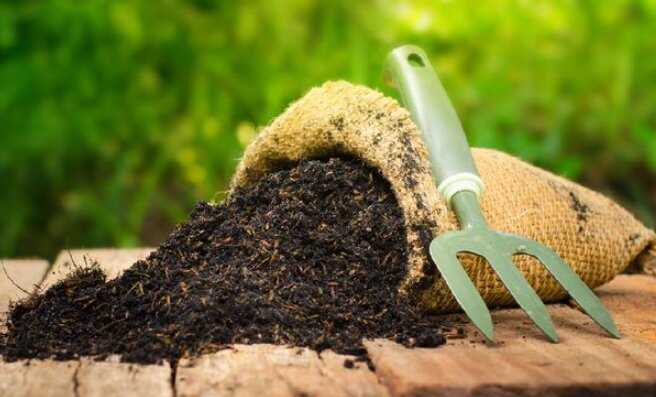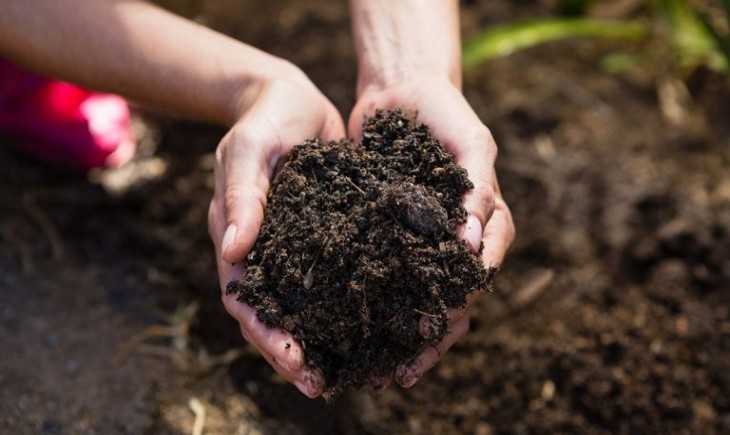The use of organic fertilizer plays an important role in maintaining soil fertility and improving agricultural soil quality in a sustainable way.
The natural materials contained in organic fertilizers help improve soil structure, enhancing both porosity and water-holding capacity. The gradual release of macro and micro nutrients also supports stable nutrient availability for crops throughout the growing season.
Organic fertilizers further stimulate the activity of soil microorganisms that function as decomposers of organic matter, keeping the soil ecosystem alive and dynamic.
These positive changes make the soil more friable, rich in nutrients, and capable of providing optimal support for long-term agricultural productivity without causing negative impacts on the environment.
Read Also : Guide to Maintaining Agricultural Soil to Prevent Damage
Tips for Utilizing Organic Fertilizer

Here are some tips for utilizing organic fertilizer to improve soil quality for more optimal and sustainable results:
1. Choose organic fertilizer according to soil needs
Selecting the right type of organic fertilizer is very important to achieve maximum results in improving soil quality. Soils have different characteristics in terms of texture, nutrient content, and acidity level.
Sandy soils, for example, generally require fertilizers with high organic matter to improve water retention, while clay soils need materials that enhance porosity.
Conducting soil analysis beforehand becomes an essential step in determining the most suitable type of organic fertilizer. The right choice will help the soil obtain balanced nutrients, ensuring its fertility lasts longer.
The compatibility between the type of organic fertilizer and soil conditions also determines the effectiveness of long-term fertilization.
Manure, compost, green manure, and liquid organic fertilizer contain different levels of nitrogen, phosphorus, and potassium.
If soil needs are not matched properly, results may be less optimal or even cause disturbances to plant growth. Understanding land conditions and choosing the right organic fertilizer creates good synergy between soil, microorganisms, and plants. This step strengthens agricultural productivity while maintaining soil health over time.
2. Use well-decomposed compost properly
The use of well-decomposed compost is crucial because organic matter that has not been fully decomposed may cause problems for both soil and plants.
Unfinished compost often generates high heat due to microbial activity, which can damage young plant roots. In addition, ammonia gas from fresh compost can lower soil quality and hinder plant growth.
Mature compost has a finer texture, no strong odor, and is dark brown to black in color, making it easier to blend with the soil. Applying well-decomposed compost enriches nutrient content without damaging soil structure.
Well-decomposed compost also provides advantages in terms of nutrient availability. Nutrients from compost that has undergone complete decomposition are more easily absorbed by plants, supporting optimal growth.
The presence of beneficial microbes in mature compost further enhances a healthy soil ecosystem.
Moreover, mature compost is safer to use in larger amounts since it poses no risk of toxicity. Applying this principle helps create more fertile and productive land, bringing long-term positive impacts.
3. Mix organic fertilizer with soil
Even distribution of organic fertilizer into the soil is essential to ensure optimal nutrient availability. Without proper mixing, organic fertilizer may accumulate in one spot, making absorption uneven.
The process can be done by plowing or loosening the soil first and then spreading the organic fertilizer thoroughly.
This step allows nutrients to integrate better with the soil, making them more accessible to plant roots. Soil that is evenly mixed with organic fertilizer generally becomes more friable and healthier.
The equal availability of nutrients from organic fertilizer improves soil ecosystems and reduces the risk of nutrient deficiencies in plants.
Soil microorganisms also develop more easily when organic matter is well distributed. With proper mixing, the soil’s cation exchange capacity can increase, making nutrients more stable.
Furthermore, mixing prevents nutrient leaching caused by heavy rainfall or excessive irrigation. This practice ensures more efficient use of organic fertilizer and delivers more optimal long-term results.
4. Apply regularly and consistently
Organic fertilizer application should not be sporadic since soil fertility requires a continuous supply of nutrients. Regular use ensures that organic matter is consistently added into the soil, maintaining microbial activity and boosting nutrient reserves.
Soils that receive organic fertilizer consistently tend to be more stable in fertility and can sustain crop productivity in the long term. In contrast, irregular fertilization may result in nutrient depletion and declining soil quality.
Routine organic fertilizer application also helps reduce dependence on chemical fertilizers. Soils accustomed to organic inputs will be more balanced both biologically and chemically.
Continuous organic matter supply strengthens soil structure and enhances its water-holding capacity.
Over time, consistent organic fertilization makes farmland more resistant to degradation and more productive. Developing this habit creates a natural cycle that supports sustainable agriculture.
5. Combine organic fertilizer with biofertilizer
The combination of organic fertilizer and biofertilizer produces more effective results compared to using either one alone.
Organic fertilizers serve as nutrient sources and raw material, while biofertilizers contain microorganisms that accelerate the decomposition of organic matter.
Microbes from biofertilizers improve nutrient availability, making it easier for plants to absorb them. This combination creates healthier, more fertile soil rich in microbial life.
In addition, this synergy enhances soil resilience and reduces the risk of plant diseases. Biofertilizers often contain beneficial bacteria or fungi capable of suppressing pathogenic organisms in the soil.
With organic fertilizers as their food source, these microbes can develop more effectively, maintaining soil ecosystem balance. The benefits are not only short-term but also long-lasting for agricultural productivity.
The collaboration between organic and biofertilizers creates stable soil conditions and supports natural plant growth.
6. Utilize agricultural waste as fertilizer
Using agricultural waste as organic fertilizer is an effective way to reduce dependence on chemical fertilizers while preserving the environment.
Harvest residues such as straw, corn stalks, or leaves can be processed into nutrient-rich compost. The composting process not only reduces the volume of waste that would otherwise be discarded but also transforms it into a valuable material for improving soil quality.
In this way, waste that was once considered worthless can play an important role in enriching the organic matter content of the soil.
Another advantage of using agricultural waste as organic fertilizer is the creation of a sustainable farming cycle.
Soil enriched with organic matter from waste becomes more friable, retains water better, and supports greater microbial activity.
In addition, production costs can be reduced because the need for external fertilizers decreases. This practice demonstrates that proper waste management can generate dual benefits, improving soil fertility while enhancing farming efficiency.
7. Apply fertilizer in balanced doses
The excessive use of organic fertilizer can negatively affect soil structure and plant growth. Too many nutrients may lead to nutrient saturation or hinder the absorption of certain elements.
Applying fertilizer in balanced doses provides the soil with just the right amount of nutrients it needs without overloading it.
The determination of dosage is usually adjusted according to the type of crop, land conditions, and the quality of the fertilizer used.
Balanced application is also important for maintaining soil fertility sustainability over the long term. Applying the right amount of organic fertilizer ensures that microbial activity runs optimally without disrupting the soil ecosystem balance.
Moreover, balanced use helps prevent environmental pollution caused by nutrient leaching into water sources. Thus, proper dosing not only improves the effectiveness of organic fertilizers but also helps protect the surrounding environment.
8. Apply fertilizer at the right time
Applying organic fertilizer at the right time is crucial to its effectiveness in improving soil quality and supporting plant growth.
Application at the beginning of the planting season, for instance, provides sufficient nutrients for young plants as they adapt to their environment.
Fertilizer timing should also align with plant growth phases to ensure that nutrient availability matches crop needs. This practice makes nutrient absorption more efficient and results in more optimal yields.
In addition, applying organic fertilizer at the right time helps prevent nutrient loss due to evaporation or leaching.
Heavy rainfall, for example, can wash away fertilizer before the soil absorbs it, while during the dry season nutrients may evaporate more quickly. Therefore, proper timing preserves fertilizer effectiveness and minimizes waste.
This practice maintains soil fertility stability and supports sustainable farming.
9. Prepare the soil before fertilization
Soil preparation before applying organic fertilizer aims to create better conditions for maximum nutrient absorption. Loosened soil has more pores, allowing fertilizer to mix evenly with the growing medium.
Preparation also helps eliminate weeds and plant residues that may interfere with nutrient absorption. Well-prepared soil responds more quickly to the addition of organic fertilizer.
The process also improves soil aeration, making microbial activity that decomposes organic matter more effective. Under such conditions, organic fertilizer decomposes faster into nutrients that are readily absorbed by plants.
Good soil preparation also improves soil structure, making it friable and easier to cultivate in subsequent stages. Thus, preparing the soil before fertilization increases the efficiency of organic fertilizer use while enhancing overall land quality.
10. Combine with environmentally friendly farming techniques
Integrating organic fertilizer with environmentally friendly farming techniques provides dual benefits for soil fertility and environmental conservation.
Sustainable systems such as crop rotation, agroforestry, or intercropping enhance the effectiveness of organic fertilizers. These combinations create a more stable soil environment capable of providing long-term nutrients.
The presence of cover crops also helps maintain moisture and reduce erosion, enabling organic fertilizers to work more effectively.
Eco-friendly approaches also reduce the risk of soil degradation caused by intensive farming practices. Techniques such as using botanical pesticides, water-efficient irrigation, or drip irrigation complement the benefits of organic fertilizers.
Soil managed under sustainable principles becomes healthier, more fertile, and more productive. By integrating these methods, organic fertilizers not only improve soil quality but also support a more balanced and resilient agricultural ecosystem.
Applying these tips can make the soil healthier, more fertile, and richer in essential nutrients needed by plants. The use of organic fertilizer also helps maintain the balance of the soil ecosystem, preventing it from being easily degraded.
Consistent care will result in better land quality to support long-term agricultural productivity.
Read Also : The Proper Way to Maintain Soil Moisture in Dry Farmland






